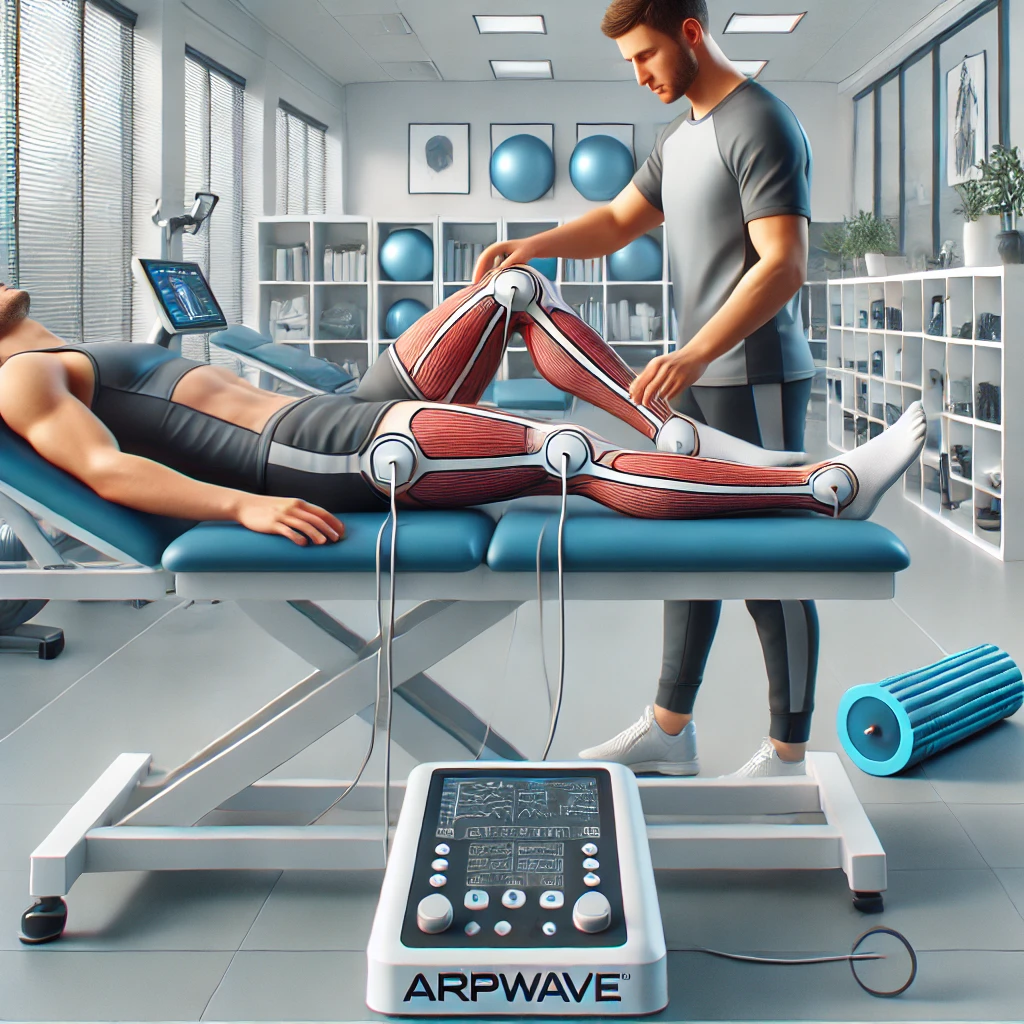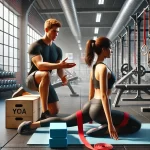
CrossFit’s high-intensity nature, coupled with its focus on functional movements, can place significant stress on the body. CrossFit workouts often involve heavy lifting, explosive movements, and high-impact cardio, which can lead to muscle fatigue, soreness, and even injury if not approached with caution. Here is where ARPWave therapy comes into play, offering a unique and effective way to aid CrossFit enthusiasts in optimizing performance, accelerating recovery, and preventing injuries.
ARPWave Therapy: A Quick Overview
ARPWave therapy (Accelerated Recovery Performance Wave) is a cutting-edge neuromuscular stimulation technique designed to accelerate the body’s natural healing process, reduce pain, and improve muscle performance. Unlike traditional therapies that treat the symptoms of pain or injury, ARPWave therapy addresses the root cause of muscle tension and dysfunction by targeting the nervous system and muscle connections.
Using devices like the FlexDoctor, ARPWave therapy sends electrical impulses to stimulate the muscles, increasing blood flow and oxygenation to the targeted areas. This enhances the body’s ability to repair itself and optimize muscle function, making it a valuable tool for CrossFit athletes of all levels.
How ARPWave Therapy Benefits CrossFit Enthusiasts
1. Enhanced Muscle Recovery
CrossFit workouts are known for their intensity and can lead to significant muscle fatigue and soreness, commonly known as delayed onset muscle soreness (DOMS). ARPWave therapy can significantly speed up the recovery process by stimulating muscle contractions and increasing blood flow to the affected areas. This enhanced circulation helps flush out metabolic waste products like lactic acid and promotes the delivery of nutrients and oxygen to the muscles, accelerating recovery and reducing soreness.
For instance, after a grueling CrossFit WOD involving heavy squats and deadlifts, athletes might experience tightness and soreness in their legs. Using ARPWave therapy post-workout can quickly alleviate this muscle fatigue, allowing individuals to recover faster and be ready for their next training session with minimal downtime.
2. Injury Prevention
CrossFit’s varied and high-intensity movements, such as Olympic lifts, box jumps, and kettlebell swings, can sometimes result in injuries, particularly if athletes have imbalances, weaknesses, or improper movement patterns. ARPWave therapy can be used proactively to identify and address these issues before they lead to more serious injuries.
By targeting neuromuscular inefficiencies and re-educating muscles to fire correctly, ARPWave therapy helps improve movement patterns and reduce the risk of injury. For example, CrossFit athletes often struggle with tight hip flexors or weak glutes, which can lead to knee and lower back issues. ARPWave therapy can stimulate the correct muscle activation patterns, enhancing joint stability and functional movement.
3. Pain Relief and Accelerated Healing
Due to the physically demanding nature of CrossFit, athletes may experience injuries such as sprains, strains, or overuse conditions like tendinitis. ARPWave therapy provides immediate pain relief by interrupting pain signals and facilitating the body’s natural healing process. The therapy helps to relax tight muscles and reduce inflammation, allowing athletes to return to their training regimen faster than they would with traditional recovery methods alone.
For example, if a CrossFitter develops shoulder pain from repetitive overhead movements (like pull-ups or snatches), ARPWave therapy can target the shoulder muscles and tendons to reduce inflammation, relax tight areas, and promote healing. This enables athletes to address the injury without lengthy breaks from their training, thus minimizing interruptions to their progress.
4. Improved Performance and Strength
CrossFit relies heavily on strength, power, and speed. ARPWave therapy can enhance performance by optimizing muscle contractions and neuromuscular efficiency. By stimulating the nervous system, ARPWave therapy improves the recruitment of muscle fibers, resulting in more effective and powerful movements. This neuromuscular re-education helps athletes execute complex CrossFit exercises, like Olympic lifts or gymnastic movements, with greater strength and precision.
For CrossFitters who regularly perform high-intensity exercises, ARPWave therapy can help maintain peak muscle performance and prevent fatigue from setting in too quickly. Athletes can push harder and longer during their WODs, knowing their recovery will be faster with the aid of ARPWave therapy.
5. Addressing Muscle Imbalances
CrossFit involves a variety of movements that engage different muscle groups. However, even with varied workouts, some athletes may develop muscle imbalances due to dominant muscle groups compensating for weaker ones. Over time, these imbalances can lead to poor form, reduced performance, and increased injury risk.
ARPWave therapy can identify and correct these muscle imbalances by stimulating the underactive muscles and reducing over-reliance on dominant ones. This neuromuscular stimulation helps re-establish proper movement patterns, ensuring that athletes use their muscles more efficiently during CrossFit workouts. For example, athletes with weak glutes might overuse their lower back muscles during deadlifts, which could result in back pain or injury. ARPWave therapy can help activate the glutes properly, leading to better form and a more balanced distribution of effort during lifting exercises.
Real-Life Example: CrossFit Athlete Using ARPWave Therapy
A CrossFit athlete preparing for a competition may undergo ARPWave therapy sessions leading up to the event. After intense WODs that include heavy lifting, high-volume squats, and gymnastic movements, the athlete can use ARPWave therapy with the FlexDoctor device to expedite recovery and reduce muscle fatigue. The therapy would focus on key areas like the shoulders, back, legs, and hips to ensure the muscles are ready for peak performance.
Moreover, if the athlete experiences tightness in the shoulders from repetitive overhead movements, ARPWave therapy can target the shoulder muscles to enhance flexibility, reduce pain, and restore full range of motion. This not only helps the athlete avoid injury but also allows them to perform at their best during competition.
Conclusion: Why CrossFitters Should Consider ARPWave Therapy
In the world of CrossFit, where high-intensity workouts and varied functional movements are the norms, the risk of fatigue and injury is always present. ARPWave therapy offers a proactive and effective solution for managing these challenges. By enhancing muscle recovery, preventing injuries, providing pain relief, and improving neuromuscular efficiency, ARPWave therapy can be a game-changer for CrossFit enthusiasts.
Whether you are a beginner CrossFitter seeking to build a solid foundation or a seasoned athlete aiming for peak performance, integrating ARPWave therapy into your fitness routine can help you train smarter, recover faster, and push your limits safely. This holistic approach to recovery and performance optimization makes ARPWave therapy an invaluable tool for anyone engaged in the demanding and dynamic world of CrossFit.


